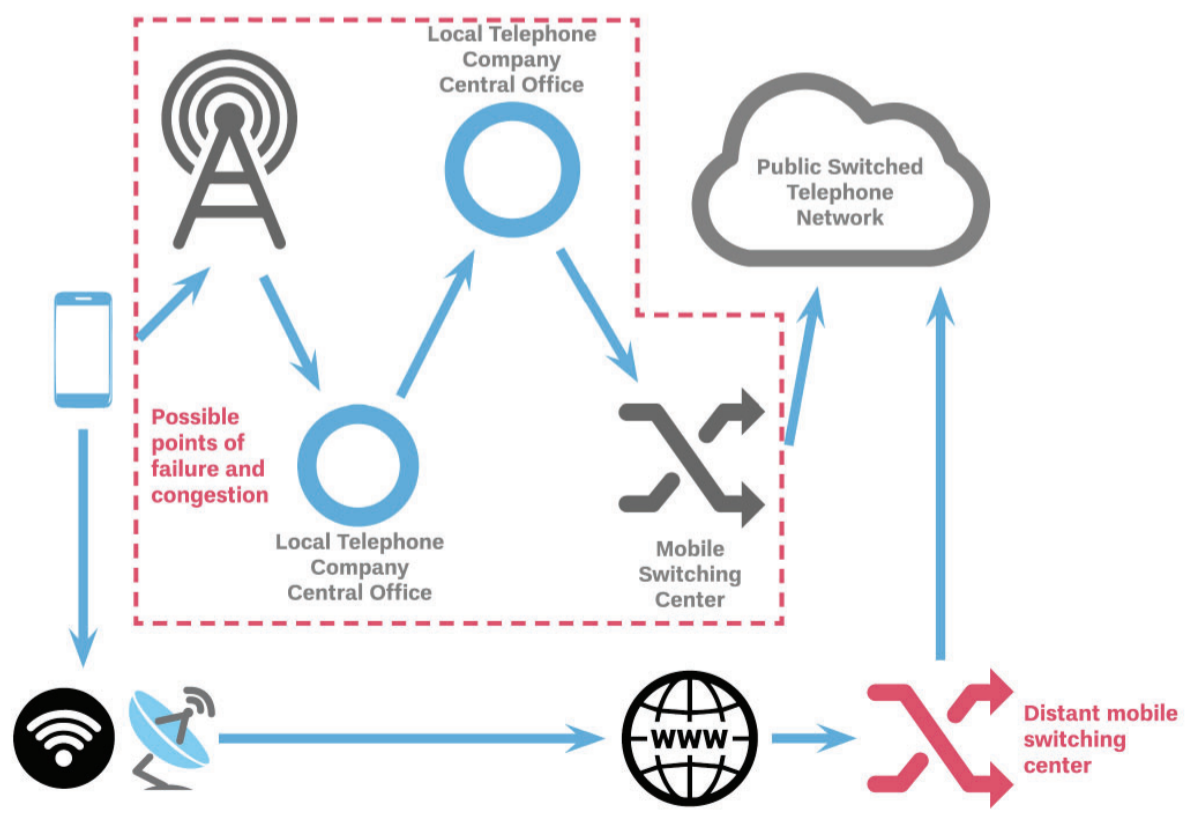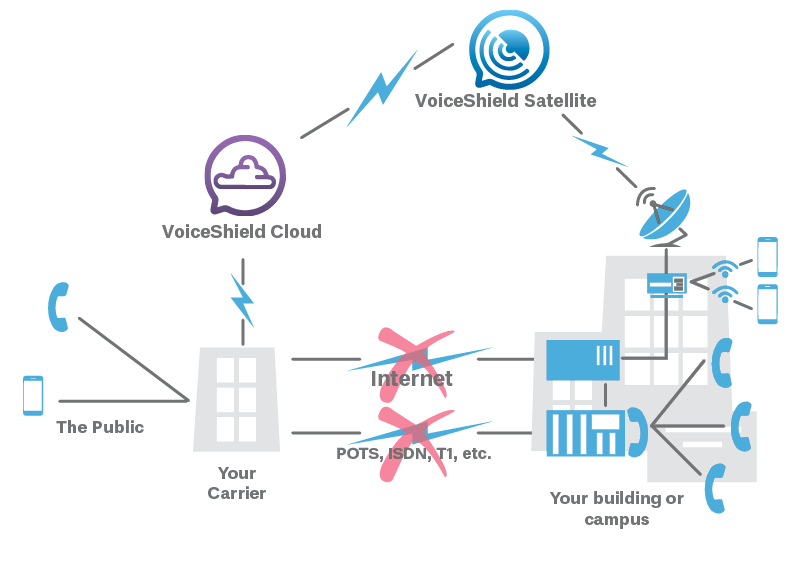The 7 Imperatives
If you read any of the after-action reports following a disaster or any major incident you will find that if communications are lost, organizations cannot operate effectively, and recovery is difficult.
There are seven things an organization can do to dramatically reduce the chances of being caught without the ability to communicate.
Number One
Install a fully monitored, high speed, satellite internet connection at your location.
The cost can range from $100 a month to thousands based on your bandwidth needs, the installation cost can range from $600-$1,000. The lower, most cost-effective speed would be in the 20-30 Mbps range. The importance of satellite is that you will have a secure connection to the internet in another part of the country usually thousands of miles away from your location. Satellite internet service is a great option for back-up, you will experience some latency (600 milliseconds) but you can still talk, restore cellular, and browse the internet.
Your satellite internet connection should terminate at your command center or operations center. You should not share this connection with others. You need a command center that is always up, always on and always ready. Your command center can use the internet connection for voice over internet, email, web, notifications, accessing cloud information, restoring cellular service, you name it, we live in a data driven world. If it makes financial sense get 2 or 3 additional dishes for other departments.
Number Two
Turn on Wi-Fi calling on your cell phone.
Have you been in a stadium with a lot of people and not been able to make or receive a call? Congestion occurs when an infrastructure that was designed for 1 out of 10 people to make a call, experiences 2 out of 10 people making a call and the caller hears “all circuits are busy” or gets a busy signal. In the 2017 Las Vegas shooting incident, the infrastructure was not affected but no one, or very few, could make or receive a voice call on a landline or a cell phone because there were so many people trying to place phone calls and text messages across the local network. You could not even send and receive text messages. Here is how WiFi calling fixes your problem:

Number Three
Replace backup analog lines with satellite analog lines.
Almost every organization has what are called POTS lines (plain old telephone service). They were originally installed in organizations as a backup in the event that the primary telephone circuits failed. These lines are expensive and will go down with your other lines when the last mile fails. Copper POTS lines are just as vulnerable as any other connection to the public telephone network. Satellite backup will save you money and add extra resiliency to your communications by skipping over the “last mile”. POTS lines may be required for old elevators and alarm systems. It may be wise to keep a couple of these lines in addition to the new satellite connection to add further resiliency.

Number Four
Have a toll-free number.
Toll-free numbers route differently than a 10-digit number. For example: If you have a 212-555-5555 telephone number. That number more than likely resides at a telephone company central office in downtown New York City and is more difficult to re-route or recover in the event of a major incident or a common telephone outage. A toll-free number can point to any location in North America and can be re-pointed in one minute.
Just because you have a toll-free number does not mean you have to publish it or let people know what the number is, it can remain working and, in the background, until you have an emergency or a need.
Never get your toll-free number from the same telephone provider as your local telephone number. If something happens in your local area and others have lost local telephone service, there is a very high likelihood that your local telephone provider’s customer service lines will be swamped.
Number Five
Backup your toll-free number on a separate redundant network.
If you have critical toll-free numbers that you want to protect and reduce the chances that it will ever fail. This step is not expensive and requires little effort. For this step you will add one additional carrier so that all your toll-free numbers are set up on two different carriers. In the event of any type of outage you have a user interface which allows you to be in control of your routing and to route the traffic from one provider to the other in less than 12 minutes. The companies that help you do this are known as “Third party resporgs” resporg stands for responsible organization.
Number Six
Set up call forwarding on your main 10-digit telephone number
If you have some critical 10 digit telephone numbers, set up remote call forwarding. If your numbers ever fail for any reason, they are forwarded to a backup service in the cloud. It is surprising how many large organizations are not aware of this option. If your organization has between 20 and 200,000 people you can remotely or from onsite forward your telephone calls to a cloud hosted PBX.
For example, your telephone switch fails, lines are cut, lines are congested or the phone company falters. You have 5 important incoming telephone numbers that all route to different places in your building or campus. Each of the 5 numbers are forwarded to a hosted PBX where they are answered by an auto attendant. The greetings are different for each number, one might say “thanks for calling customer support, please listen carefully to the following options”. When the caller makes a selection. The hosted PBX then sends the call to an alternate location, a cell phone, a voip phone, plays a message or records a message and can even go to another menu. You can modify where calls get routed live and real time in any outage or disaster.

Number Seven
Use the 3 tools
The government mandated that the following three options be available to organizations that are involved with public safety.
A)GETS card.
This is Government Emergency Telephone Service (GETS). In essence it’s a calling card to cut through congestion.
Visit https://www.dhs.gov/cisa/government-emergency-telecommunications-service-gets
B)Wireless Priority Service (WPS)
WPS is used in an emergency or crisis situation when the wireless network is congested and you can’t make a cell phone call. The service needs to be set up in advance with your wireless provider. To use WPS you dial *272 the 10 digit number and your call takes priority over others (theoretically).
Visit https://www.dhs.gov/cisa/wireless-priority-service-wps
C)Telecommunications Service Priority (TSP)
When you sign up for TSP with your local phone company, the phone Company is mandated to repair your service before others in line. Your organization will receive priority attention by your vendor (theoretically).
Visit https://www.dhs.gov/cisa/telecommunications-service-priority-tsp
